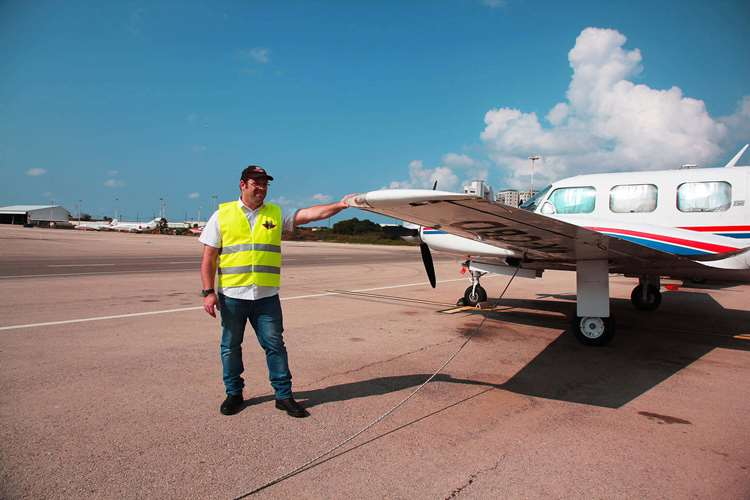The field of flight testing is a highly developed one in the world. The combination of technological advancement, defense needs and experience and the constant wish to improve performance have created a situation in which there is great demand for operating manned civilian aircraft for flight tests.
The field of flight testing
Flight tests is an established area in aeronautics engineering which deals with gathering operating data and analyzing the characteristics of aircraft and airborne systems. The goal of performing a flight test usually stems from the need to examine and approve the capabilities of the tested system in a flight configuration, as part of the commercial licensing procedure or as part of its research and development. A wide variety of test flights are performed by different sectors of the aviation and technology industry, such as developers of sensing and observation systems, radars, transmitting and receiving antennae arrays and others.
For consultation or booking experimental flight services contact us >
Types of installations in flight tests
The technical division in the field of flight testing is into two major fields – installing systems which do not protrude from the plane’s faring (its outer frame as it was originally manufactured), and installations which protrude out of the plane’s faring (systems which are installed anywhere on the plane and protrude out of its original faring).
In both cases. Any modification in the craft’s configuration will have to be examined in all of the relevant aspects in order to maintain the safety of the aircraft and of the air crew that operates it. Characterizing the installation configuration in the engineering design stage can be critical for the procedures of installation, licensing and actual flight. Therefore, it is necessary to carefully examine the system’s requirements opposite the aircraft’s capabilities before performing the initial engineering design for the integration of the system and plane.
Installations with no protrusion from the aircraft’s faring
Installing systems or any other equipment which is held in the aircraft’s cabin space with no protrusion from the plane’s outer faring. This type of installations is performed with consideration of all of the modifications which the installed system can require, like weight, position, electro-magnetic impact, electricity consumption, structural strength and processes of maintaining continuous airworthiness.
Most systems in this area require an angle for looking out, and therefore are installed upon an aircraft with a designated photography hatch in its underbelly, which enables the positioning of the system on the hatch while maintaining the ability of the operator to access the system and operate it from where they are seated in the cabin.
In addition to these systems, there are many types of transmitters or receivers under examination and development which have to be positioned in the plane’s cabin space in order to test the function for which they were developed.
Procedures of installation, licensing and flying systems which do not protrude from the plane’s faring are usually simpler, and can be performed in shorter time spans.
For consultation or booking experimental flight services contact us >
Installations of systems which protrude from the aircraft’s faring
Many systems require installation outside the cabin’s space because of their size, weight, shape or the workspace in which they operate. Such systems, which protrude from the plane’ faring, go through a licensing procedure which goes beyond the regularly examined areas, and have to go through a process of “opening faring,” which basically means a re-examining of the aircraft’s performance in view of the modifications in its aerodynamic outer faring.
In view of the fact that the safety of the flight must precede all else, in flights with opening faring and flight area opening, a certified test pilot is needed to prepare the flight plan in view of the expected changes in the aircraft’s behavior after the structural and aerodynamic modification of it.
LIFEAIR specializes in the field of flight testing for the purposes of flying airborne remote sensor systems, target and calibration flights and various mapping flights. LIFEAIR’s clients receive full coverage of service in all of the performance areas of flight tests.
